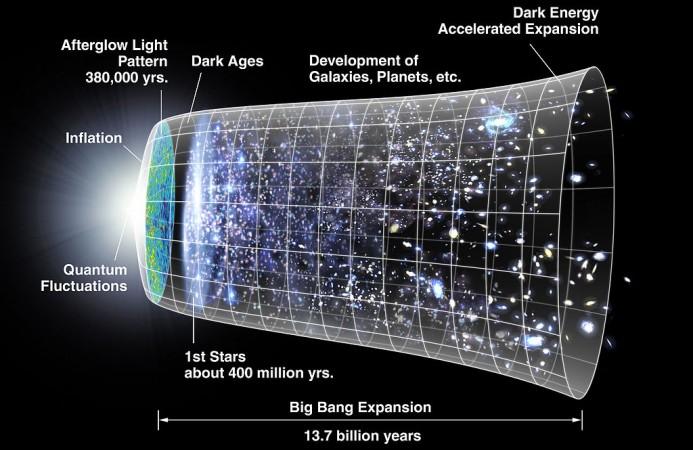
The universe is 13.8 billion years old, the Milky Way Galaxy is about 10 billion years old, the Solar System is 5 billion years old, and life on Earth started about 3 billion years old.
All of these numbers are too huge and cover time periods that are not just difficult to imagine, it is almost impossible. That is why YouTube personality John Boswell, known as melodysheep, created a time-lapse that covers the entire universe -- from Big Bang to the present day and condensed nearly 14 billion years of time into a video about 10 minutes long.
Every second in the video is scaled to about 22 million years in real time. Through the course of the video, one gets to clearly see how galaxies, stars, star systems, planets, and finally life came to be. Also, based on this timescale, humans do not appear until the last fraction of the end of the video.
The very beginning of the video describes what physicists call the "Big Bang". This is the instant when nothingness exploded from a point as big as pinhead out into all matter that makes up the universe. This point is also called the singularity.
Since then, as shown in the video, the universe began to expand, rapidly and has continued to do so till date.
The first stage after the big bang is when the first stars were formed. Dust, gas and gravity, all came together to create the universe's earliest stars, notes the narrator. Gravity then connects the star systems together, forming vast galaxies.
Over the next few billion years, the universe continues to evolve, passing through several distinct eras. These milestones are normally marked by the birth and death of the stars that time both creates and eventually eats up.
The video goes on to explain stellar mass black holes and how they rip and shred entire stars and eject massive plumes of radiation across the cosmos.
Through this circle of life and death of stars, somewhere in the void where the collapse and eventual explosion of a huge star, an event called a supernova, set off the birth of the Sun in a nebula.
Hydrogen feeding into the sun because of the pull of gravity from the Sun help it grow and evolve. A few million years on, a number of planets also form, from the clouds of dust left over.
One of those planets is the Earth. A baby planet that gets constantly pummeled by debris from its surroundings slowly forming and molding it. During one of these collisions - a rather large object hits the Earth with enough force to cause the formation of the Moon - Earth's only natural satellite.
The Earth then began its journey and evolution, starting off as a mass of rock hostile, dominated by volcanoes and completely lifeless. Eventually, in the oceans, life started to bloom.
For 3 billion years, there was nothing but simple microscopic organisms all over the planet, adapting and growing into millions of different species. These bacterial organisms also began to enrich the atmosphere with oxygen.
Life then gets more and more complex and eventually animals evolve.
The video is not only informative, it is breathtaking, humbling, and puts a lot of things in perspective. The insignificance of the Earth in the vast cosmos is something that really needs to be seen and felt.


















